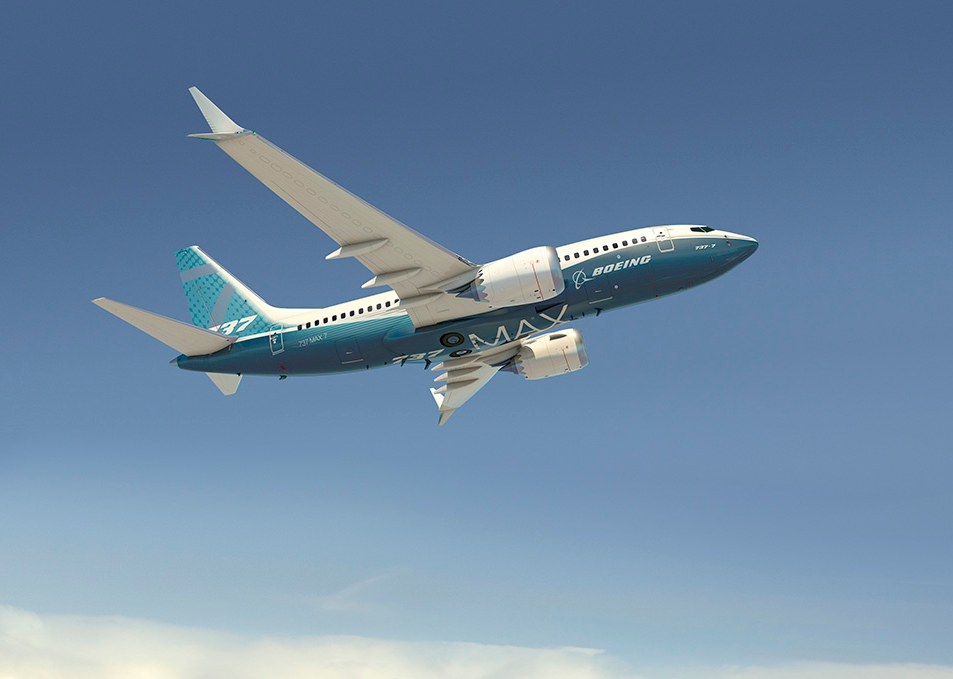Leeham News and Analysis
There's more to real news than a news release.
The Boom SST engine problem
By Bjorn Fehrm
Subscription required
Introduction
November 28, 2016, ©. Leeham Co: We covered Boom Technology’s and Virgin Atlantic’s plans to offer supersonic business class passenger traffic over the Atlantic in recent articles. In the first article, we focused on the problem areas that Boom technology must master.
The most difficult area is to find a suitable engine for the aircraft. Engines for long-range supersonic flight are quite different animals than the normal subsonic airliner engine. We will go through why the engines are different and give an example of how such an engine could look.
By creating a concrete example of an SST engine for an aircraft the class of the Boom SST, it will be possible to understand if Boom’s claim that suitable cores are available holds water, and how realistic is it to make an SST engine from these.
Summary:
- An SST engine is very different from a modern engine for a long-range airliner.
- A high-performing long-range engine for a normal airliner has a high bypass and pressure ratio.
- A high-perfoming long-range SST engine for a supersonic airliner has a low bypass and pressure ratio.
- Intakes and exhausts on subsonic engine nacelles are simple.
- Intakes and exhausts on supersonic engine nacelles are not simple.
- Considering all these factors, we will design an engine system for the Boom SST to get a deeper understanding of the challenges involved.
Will Boom succeed where Concorde failed?
By Bjorn Fehrm
November 17, 2016, ©. Leeham Co: Boom Technology plans to do a 45-seat airliner for supersonic passenger traffic with service entry by 2023. Richard Branson’s Virgin Atlantic has already placed an optional order for 10 units of the aircraft.
The idea is to fly 45 business class passengers between New York and London in 3 hours and 25 minutes. This means the Boom Super Sonic Transport shall be 10% faster than the Aerospatiale/BAC Concorde.
What makes the Boom SST succeed where the Concorde failed?
We will look at the challenges that Concorde had and see how Boom SST plans to attack them. We will also discuss what the chances are that Boom SST can master these challenges. Read more
Russian-Chinese wide-body: The aircraft, Part 4
By Bjorn Fehrm
Subscription required.
Introduction
September 15, 2016, ©. Leeham Co: In Part 3 of this series, we identified the type and size of wing we would have on a new Russian-Chinese wide-body. It’s now time to go through all the considerations around the engines for the aircraft.
The aircraft would enter the market around 2025. We would have to decide on what size engine that would be needed, what engines would be available at the time and could this project motivate any new engine developments.
Summary:
- The Russian-Chinese wide-body as outlined would require engines in the size class of the Boeing 787-9/10.
- GE and Rolls-Royce have been mentioned as engine suppliers. The question would be: will they offer updated 787 engines or new designs and will Russia compete with its announced engine project for the aircraft?
Russian-Chinese wide-body: The aircraft, Part 2
By Bjorn Fehrm
Subscription required.
Introduction
September 01, 2016, ©. Leeham Co: In Part 1, we concluded that the existing Il-96 fuselage cross section would be suitable for a new Russian-Chinese wide-body. This means that a lot of experience and existing designs for fuselage sections can be re-used.
Most importantly, it means that mock-ups and cabin sections can be made early in the project to start work on new and better cabin equipment. This is an area where the partners really lag their western competitors.
We will now look at what aircraft capacities can be conceived with the existing Il-96-300 and -400 fuselages and what changes will be necessary to achieve the targeted sizes that Russia’s United Aircraft Corporation (UAC) and Commercial Aircraft Corporation of China (COMAC) have communicated.
Summary:
- The IL-96 fuselage can be re-used for a Russian-Chinese wide-body.
- The existing IL96-300 cabin is on the small side whereas the Il-96-400 cabin is a bit larger than needed.
- The project will likely choose an intermediate size fuselage to reach the targeted 250 to 280 passenger capacity.
Russian-Chinese wide-body: The aircraft
By Bjorn Fehrm
Subscription required.
Introduction
August29, 2016, ©. Leeham Co: We have now covered the capabilities of the joint venture partners for a Russian-Chinese wide-body and its possible market. Now we will look at what kind of aircraft such a cooperation can create, given technology and other constraints.
There have been bits and pieces leaked to media from Russia’s United Aircraft Corporation (UAC) and Commercial Aircraft Corporation of China (COMAC).
We will look at what has been said and combine that with our knowledge of existing and future technological capabilities of the parties to make predictions for what aircraft the project can produce.
Summary:
- The Russian-Chinese wide-bodywill be made to cover the “small wide-body”market.
- Initial size will be a 250-280 passenger wide-body
- The aircraft will be a twin with engines from either GE or Rolls-Royce.
- Range with 280 passengers will be 6,500nm.
Russian-Chinese wide-body: The market
By Bjorn Fehrm
Subscription required.
Introduction
August 25, 2016, ©. Leeham Co: Having dissected the players behind the Russian-Chinese wide-body, it’s time to look at what market such an aircraft aims to capture.
The project participants, Russia’s United Aircraft Corporation (UAC) and Commercial Aircraft Corporation of China (COMAC), say they intend to make a 250-280 seat aircraft with a 6,500nm range.
We will look at what market such an aircraft can address from its Entry into Service (EIS) 2025 and over the next 10 years. We will also discuss the constrains that emerges with UAC and COMAC entering the market as new players.
Summary:
- The Russian-Chinese wide-body covers a market segment called “small wide-body” in the Global market forecast made by Airbus and Boeing.
- Based on data in these forecasts, the dominant market during the first 10 years after a 2025 Entry into Service (EIS) would be a captive Chinese market.
Russian-Chinese wide-body: background and outlook
By Bjorn Fehrm
Subscription required.
Introduction
August 21, 2016, ©. Leeham Co: The discussions around a joint Russian and Chinese development of a 250-300 seat wide-body has been going on for years.
The project got a more concrete form at President Putin’s visit to China in June. On the 25th of June visit, an inter-governmental agreement to develop and market the aircraft was signed.
At the same time Russia’s United Aircraft Corporation (UAC) and Commercial Aircraft Corporation of China (COMAC) agreed to establish a joint venture for the program.
What market is this aircraft trying to address and will it become a serious player in the wide-body market? Will it give the duopoly Airbus/Boeing something to worry about?
We will address these questions in a series of articles. Before going into the questions around the wide-body program, we will look at the players, UAC and COMAC. Are they up to the job of making a competitive wide-body aircraft?
Summary:
- Russia and China enter the wide-body project with widely different knowledge bases.
- China’s first airliner project, ARJ21, just received local certification after years of delays.
- Russia has produced over 10,000 airliners and has made two generations of wide-body aircraft in the size category.
- The latest wide-body aircraft, Ilyushin IL-96, is on the level of Airbus A340-300 from a technological basis.
Boeing: Our 737 MAX product range will come to market as planned despite changes
By Bjorn Fehrm
July 13, 2016, ©. Leeham Co, Farnborough Air Show: Mike Delaney, Boeing’s Vice president and General manager for Aircraft development in the Commercial Airplane division, promises unchanged delivery times despite late changes to the company’s 737 MAX line-up.
Delaney went through the changes for the MAX program as part of a larger presentation, outlining the status for all ongoing aircraft developments within Boeing at the ongoing Farnborough Air Show.
Bjorn’s Corner: Efficient systems
05 February 2016, © Leeham Co: In recent Corners, we looked into technologies which have made the new breed of airliners more efficient.
We’ve talked about how new engines can raise efficiency by about 15% and how aerodynamic improvements, like more efficient split winglets, can add another 1%-2% over single blade winglets. We have also looked into modern ways to manufacture the more resilient and lighter composites structures that designers want to use to increase aircraft efficiency.
There is one area which we have not covered: the aircraft’s systems and how these can be made more efficient. An improved system architecture can add the efficiency improvement of a split winglet. So let’s have a look at the trends in aircraft systems.
We start this week with power distribution.
Boeing’s 767 revitalized as a MOM stop gap, Part 2
By Bjorn Fehrm
Subscription required.
Introduction
Aug. 31 2015, ©. Leeham Co: Last week we started to look at Boeing’s 767 to see if it can serve the passenger and range space which is not well covered by modern aircraft: the 225 passenger/5,000nm sector. Boeing calls this the Middle of the Market or MOM. Boeing recently said that there is some increased interest for the 767. We analyze why and what can be done to increase any chances of it having a new life as a passenger aircraft.
We started with comparing the 767’s different variants to the most likely MOM aircraft from our series “Redefining the 757 replacement requirement for the 225/5000-sector”. We will now continue and look at the 767 in detail, its strong suits and its less efficient areas. We will also discuss what can be made to address the less efficient areas.
Summary:
- Boeing’s 767 has the right cross section for passenger transportation in the 225 passenger/5,000nm segment.
- It also carries cargo containers, not as efficiently this time. We show what the consequences are.
- Finally the wing is not the slender wing of the modern aircraft. We show what impact it will have on overall efficiency.
- Combined with engines from the 1990s, this gives less than stellar fuel economics. We investigate what can be done about this and how much of an impact it will have in today’s low fuel prices.






